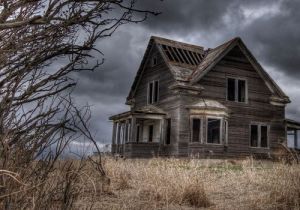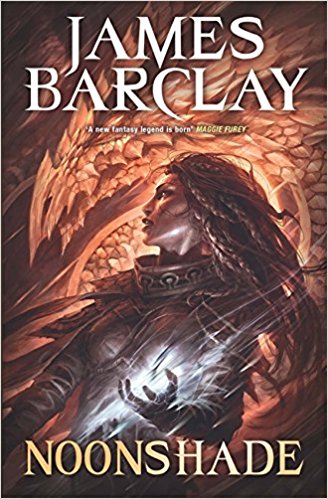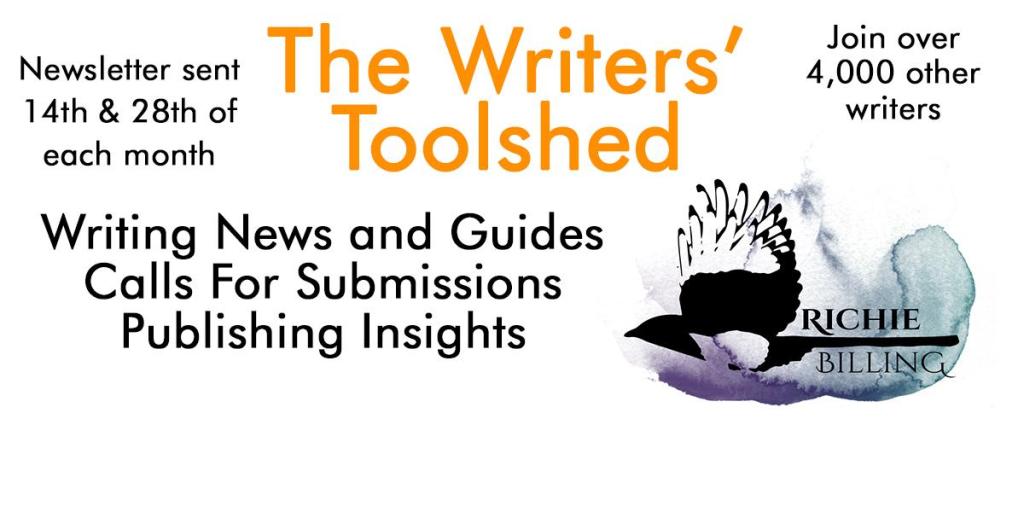So often writers receive complaints that stories are flat, or that they failed to grab the reader. There’s often a missing ingredient—suspense. Luckily, the fix is easy. And in this quick guide, I’ll show you some easy tools writers can use to build suspense.
We’ve all read a novel where at some point you put it down and forgot it ever existed. It failed to grip you, to compel you to go on. Often the culprit is a lack of suspense—the glue that binds the reader’s hands to the covers.
Knowing how to create and build suspense in writing is vital to a writer, especially when it comes to long-form pieces like novels.
Below, we’ll take a look at what suspense in writing is. We’ll go on to examine some examples of building suspense, drawing upon advice from some of the best writers in the game.
And we’ll look at a very effective tool that writers can use to build suspense.
Choose A Chapter
- What Is Suspense In Writing And Why Is It Important?
- How To Create Suspense
- How Does The Structure Of The Story Create Suspense?
- A Sure-fire Tool Writers Can Use To Build Suspense
- A Template Writers Can Use To Build Suspense
- Other Ways To Build Up Suspense
- Join An Online Writing Community
- Learn More About Tools Writers Can Use To Build Suspense
What Is Suspense In Writing And Why Is It Important?
“The suspense is terrible. I hope it will last.“
Gene Wilder said this in Willy Wonka and the Chocolate Factory (quoting Oscar Wilde). It sums up neatly the effect suspense has on readers. We both love and hate it. It excites us, titillates us, yet it frays our nerves or sometimes, causes upset.

A story that lacks suspense is often one described as flat. Boring. Dull. Doesn’t go anywhere. All of that jazz. One with too much, however, may exhaust and fatigue the reader.
Suspense hooks the reader. Building tension with each scene is what draws readers deeper into the story until they reach the point of no return—the moment they fall in love with your book.
How To Create Suspense
Knowing how to create suspense is easier said than done. If you’re looking for straightforward guidance on building suspense in writing, you’ll find the technique I explain in detail below quite useful.
I turn to this for all of my novels. I used it in Pariah’s Lament and was able to hook people enough to see them read the book in one sitting.
There are other methods that writers can use to build suspense, and we’ll go over them too.
But first, I want to talk to show you a brilliant and easy way to create suspense in writing.
How Does The Structure Of The Story Create Suspense?
“The writer’s duty is to set up something that cries for a resolution and then to act irresponsibly, to dance away from the reader’s problem, dealing with other things, prolonging and exacerbating the reader’s desperate need for a resolution.”
Sol Stein, Stein On Writing
One of the simplest yet most effective ways of building suspense is to use the structure of the story. The method of doing this is known as architectural suspense.
To create a fantastic situation in which your reader skims lines with wide eyes and a firm grip of the covers is a wonderful skill. Why ruin it by bringing those feelings to an end?

In reality, we look to avoid anxieties, yet in fiction, we seek them out. There’s a degree of excitement involved in watching someone deal with a tricky situation. It grips us. We want to see if they can get out of it.
There are other reasons too. Perhaps it makes us feel better about ourselves, that if someone you can relate to, even in a fictional book, is going through a stressful time, it almost feels like you’re not alone.
With books, we enjoy the control of an on/off switch. As soon as we close the book those feelings stop. It’s a little harder to escape the anxieties that plague our lives.
So what is architectural suspense?
In short, it’s using your plot and story structure to create threads of suspense. In doing so, you can avoid the sagging middle parts of stories that readers detest and instead keep them tearing through pages.
A Sure-fire Method Writers Can Use To Build Suspense
Architectural suspense is one of the easiest methods writers can use to build suspense.
It involves building up a series of lines or threads of suspense that begin as separate and independent strands.
At least two are recommended. The more strands, the more suspenseful the tale. Though bear in mind this is likely to make it more complex.
As you progress through the tale you weave these lines of suspense together. But the trick is in how you unspool that thread—a bit at a time, with each chapter ending on something of a cliffhanger.
How does this translate to actually writing? One way of looking at it is to create cycles of suspense. Let’s look at an example.

An Example Of Building Suspense
Chapter one of James Barclay’s novel, Noonshade, ends with a siege at breaking point.
We’re left with the thoughts of a character named Barras, who suggests he has a few tricks up his sleeve to turn the tide.
Of course, Barclay is too smart to tell us what they are there and then. Instead, he draws it out.
I almost ripped the page when I turned it to find chapter two following the tale of different characters hundreds of miles away.
Annoying, but it made me want to read on. Chapter two ends with another cliffhanger.
Then comes chapter three and back to Barras, all the while I’m wanting to know what happens to those in chapter two.
And so the cycle of suspense is born.
More Suspense Writing Examples
Another master of building suspense is George R.R. Martin. I call him a master not just for the quality of his use of plotting, character, and structure, but also for the scale of the story he’s weaving.
If you’re not familiar with his story structure, each chapter follows the perspective of a different character, and there are many. Some characters feature more than others—Daenerys, Jon, Tyrion, Arya, Jaime, to name but a few.
Without wishing to stir controversy, these are the more significant and intriguing characters. Countless times I found myself motoring through the chapters of other ‘lesser’ characters just to get to the next one about Tyrion.
If you’re looking for great examples of how to create suspense in writing, this for me, is by far one of the best.

A Template Writers Can Use To Build Suspense
Wouldn’t some kind of template be useful for writers to use to build suspense in their stories?
Indeed it would, and editor of some of the greatest books of the modern age, Sol Stein, has provided it:
“Chapter 1: The chapter ends with a turn of events that leaves the reader in suspense. The reader wants to stay with the characters and action of that chapter.
Chapter 2: The reader finds himself in another place and/or with a different character. The reader still wants to know what happens in Chapter 1. Chapter 2 ends with a turn of events that leaves the reader in suspense. The reader wants to know how Chapter 2 turns out.
Chapter 3: the reader finds himself in a continuation of the suspenseful events in Chapter 1. He is still in suspense about Chapter 2. By the end of Chapter 3, a new line of suspense has been created,
If you keep doing this with successive chapters, the reader will be continuously in suspense and there will be no sag in the middle of the book or anywhere else.”
Sol Stein, Stein On Writing
A common complaint by readers is exactly what Stein says in his final sentence—the sagging middle—and as he suggests, the architectural suspense approach may help avoid it.
I think the key rule we can take from the technique is this:
Chapter endings must arouse the reader’s curiosity to discover what happens next. It shouldn’t resolve conflict, it should open it up further.
Most, if not all of us know this. Now you know another way how to do it.
Other Ways To Build Up Suspense
If you’re interested in other ways to build suspense in writing, Stein also recommends carrying out a few ruthless editorial actions.
The first is to pick your weakest scene and cut it. From his editor’s perspective, he’s of the view that doing so will only strengthen the story.
He also recommends cutting out or minimising the narrative summaries which happen between scenes—the boring stuff we don’t really care that much about, like travelling hundreds of miles, crossing meadows of golden wheat and fields of swaying emerald grass, through the whispering woods and over rolling hills (see what I mean?).
Given the rise in complaints by readers of writers focusing too much on exposition, writers such as Patrick Rothfuss are experimenting with telling their stories in different ways, with the focus shifting to scenes alone and paring back worldbuilding. Food for thought.
Further reading: How To Create Tension In Writing
Join An Online Writing Community
I hope you’ve found this guide useful. If you’d like to get more help and guidance on the tools and methods writers can use to build suspense, join my online writing community.
With hundreds of passionate writers, it’s the perfect place to learn and grow your skills and career.
Just click below to learn more.
Learn More About Tools Writers Can Use To Build Suspense
If you’d like to check out more writing tips and guides, head here.
I also have a dedicated guide on how to use the 5 senses in writing to great effect, something which can definitely heighten the suspense and tension in scenes.
If you’d like to learn more about character development, head here. And check out this guide on my own method to planning—character plotting.
Check out this research paper on creating suspense in stories.
And here’s an excellent guide, complete with exercises on how to create suspense in writing, courtesy of the Open University.
To learn more about foreshadowing conflict in a story, head here.
Learn about sensory language examples here
You can also learn more about prose writing and examples of show not tell here.
If your story features a fantasy castle, you can learn all about them here.
Head here to learn about writing fantasy novels without magic
And sticking with genre fiction, you might find this world building template helpful, and it’s free too.
Learn how to write a literary essay here
You can also find this detailed guide on fantasy armor here too.
For help with your story once it’s been published you might find this book reviewers list useful.
If you have any questions about methods writers can use to build suspense, please don’t hesitate to contact me.
- 5 Tips to Help Your Child Learn and Succeed at Primary School - February 26, 2024
- The Advantages Of Using An AI Essay Typer Alternative - February 14, 2024
- Advice On Getting Help With Your Homework - January 26, 2024






Pingback: How Do You Plot A Story? – Richie Billing
Pingback: A Guide To Writing Fight Scenes – Richie Billing
Pingback: 4 Things I Learned Writing A Novel – Richie Billing
Pingback: How Do You Edit A Novel? #AuthorToolboxBlogHop – Richie Billing
Pingback: What Is Foreshadowing In A Story? [Definition and Examples] - Richie Billing
Pingback: Excellent Examples Of The 5 Senses In Writing - Richie Billing
Pingback: Men Writing Women Characters - Never Make These Mistakes! - Richie Billing
Pingback: How To Create Tension In Writing - Richie Billing